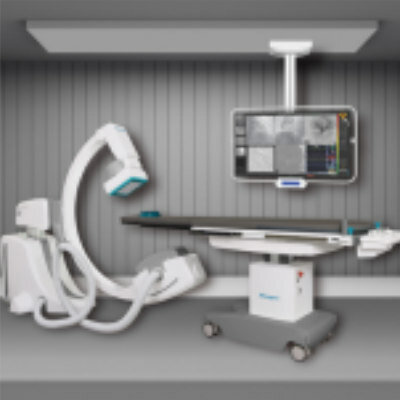CT Radiation Exposure in Obese Patients Needs Further Evaluation
|
By MedImaging International staff writers Posted on 25 Apr 2012 |
A group of US researchers has quantified the amount of radiation obese patients receive when undergoing routine medical scans. Their findings revealed that, when undergoing a computed tomography (CT) scan, a forced change of operation parameters for obese patients results in an increase of up to 62% in organ radiation exposure compared to lower weight patients.
Findings published April 5, 2012, in the journal Physics in Medicine & Biology. The researchers, from Rensselaer Polytechnic Institute (Rochester, NY, USA), hope this new study will help optimize CT scanning procedures to generate safe but effective medical images. Lead author of the study, Dr. Aiping Ding, said, “When a morbidly obese patient undergoes a CT scan, something known as the tube potential needs to be increased to make sure there are enough X-ray photons passing through the body to form a good image. So far, such optimization has been done by trial and error without the use of patient-specific quantitative analysis.”
When the researchers simulate the increase, the calculated doses of radiation reaching an obese patient’s organs increase by 62% in males and 59% in females. Their preliminary findings confirmed why the tube potential is frequently increased: a scan of the chest, abdomen, and pelvic area of obese patients, without adjusting the tube potential, revealed that organs deep within the abdomen received 59% less radiation compared to normal weight patients, due to the excess fat tissues.
Such a reduced dose could negatively affect the image quality unless the tube potential and tube current are adjusted accordingly. Results were obtained by creating 10 (5 male, 5 female) computerized phantoms with a body mass index (BMI) ranging from 23.5 kg/m2 (normal weight) to 46.4 kg/m2 (morbidly obese)--such a detailed model of obese patients has not been used before.
Phantoms are specifically designed physical or simulated objects that can be experimented with in the field of medical imaging for evaluating, analyzing, and refining the performance of various devices. This study used computer-simulated deformable phantoms that were put through a CT scanning computer model to calculate the dose of radiation exposed to each one.
The phantoms were unique in that they not only accounted for a large number of organs, but also modeled two types of fat: the subcutaneous adipose tissue (SAT) under the skin and the visceral adipose tissue (VAT) that lies deeper in the body and sits around the organs. This provided the researchers with a more precise determination about the amounts of radiation reaching different organs.
The prevalence of overweight and obese individuals has increased markedly over the past 20 years; a recent survey suggests that nearly 60% of the adult American population can be diagnosed as being clinically overweight or obese.
Given this disturbing trend and the health risks associated with obesity, it is no surprise that an increasing number of overweight or obese individuals are entering radiology clinics. “We hope that this very timely set of data will be integrated with previous work for normal size adult and child patients to form a comprehensive database to support a software package called VirtualDose that will enter clinical testing this summer. Such a tool could be used to analyze radiation exposure trends in a clinic and to study how to optimize the image quality for a large population of patients,” said Prof. X George Xu, the senior corresponding author of the study.
These new phantoms for overweight and obese patients will be part of a forthcoming software package, VirtualDose, developed by Prof. Xu and his team. VirtualDose’s objective is to enable the creation of a personalized, extremely realistic phantom of any patient undergoing a CT scan. The program takes into consideration a patient’s individual characteristics, including age, sex, height, weight, and even if a woman is pregnant. By entering these data into the software, VirtualDose quickly creates a phantom that accurately models the patient’s internal organs. These phantoms will allow physicians and researchers to compare the radiation doses a patient will get from different CT scanner settings, and then choose the most appropriate configuration.
VirtualDose will also enable physicians to keep a highly accurate record of how much radiation patients are exposed to over their lifetime. California recently became the first state in the United States to require radiation dose records for patients undergoing CT examinations.
Related Links:
Rensselaer Polytechnic Institute
Findings published April 5, 2012, in the journal Physics in Medicine & Biology. The researchers, from Rensselaer Polytechnic Institute (Rochester, NY, USA), hope this new study will help optimize CT scanning procedures to generate safe but effective medical images. Lead author of the study, Dr. Aiping Ding, said, “When a morbidly obese patient undergoes a CT scan, something known as the tube potential needs to be increased to make sure there are enough X-ray photons passing through the body to form a good image. So far, such optimization has been done by trial and error without the use of patient-specific quantitative analysis.”
When the researchers simulate the increase, the calculated doses of radiation reaching an obese patient’s organs increase by 62% in males and 59% in females. Their preliminary findings confirmed why the tube potential is frequently increased: a scan of the chest, abdomen, and pelvic area of obese patients, without adjusting the tube potential, revealed that organs deep within the abdomen received 59% less radiation compared to normal weight patients, due to the excess fat tissues.
Such a reduced dose could negatively affect the image quality unless the tube potential and tube current are adjusted accordingly. Results were obtained by creating 10 (5 male, 5 female) computerized phantoms with a body mass index (BMI) ranging from 23.5 kg/m2 (normal weight) to 46.4 kg/m2 (morbidly obese)--such a detailed model of obese patients has not been used before.
Phantoms are specifically designed physical or simulated objects that can be experimented with in the field of medical imaging for evaluating, analyzing, and refining the performance of various devices. This study used computer-simulated deformable phantoms that were put through a CT scanning computer model to calculate the dose of radiation exposed to each one.
The phantoms were unique in that they not only accounted for a large number of organs, but also modeled two types of fat: the subcutaneous adipose tissue (SAT) under the skin and the visceral adipose tissue (VAT) that lies deeper in the body and sits around the organs. This provided the researchers with a more precise determination about the amounts of radiation reaching different organs.
The prevalence of overweight and obese individuals has increased markedly over the past 20 years; a recent survey suggests that nearly 60% of the adult American population can be diagnosed as being clinically overweight or obese.
Given this disturbing trend and the health risks associated with obesity, it is no surprise that an increasing number of overweight or obese individuals are entering radiology clinics. “We hope that this very timely set of data will be integrated with previous work for normal size adult and child patients to form a comprehensive database to support a software package called VirtualDose that will enter clinical testing this summer. Such a tool could be used to analyze radiation exposure trends in a clinic and to study how to optimize the image quality for a large population of patients,” said Prof. X George Xu, the senior corresponding author of the study.
These new phantoms for overweight and obese patients will be part of a forthcoming software package, VirtualDose, developed by Prof. Xu and his team. VirtualDose’s objective is to enable the creation of a personalized, extremely realistic phantom of any patient undergoing a CT scan. The program takes into consideration a patient’s individual characteristics, including age, sex, height, weight, and even if a woman is pregnant. By entering these data into the software, VirtualDose quickly creates a phantom that accurately models the patient’s internal organs. These phantoms will allow physicians and researchers to compare the radiation doses a patient will get from different CT scanner settings, and then choose the most appropriate configuration.
VirtualDose will also enable physicians to keep a highly accurate record of how much radiation patients are exposed to over their lifetime. California recently became the first state in the United States to require radiation dose records for patients undergoing CT examinations.
Related Links:
Rensselaer Polytechnic Institute
Latest Radiography News
- AI-Powered Imaging Technique Shows Promise in Evaluating Patients for PCI
- Higher Chest X-Ray Usage Catches Lung Cancer Earlier and Improves Survival
- AI-Powered Mammograms Predict Cardiovascular Risk
- Generative AI Model Significantly Reduces Chest X-Ray Reading Time
- AI-Powered Mammography Screening Boosts Cancer Detection in Single-Reader Settings
- Photon Counting Detectors Promise Fast Color X-Ray Images
- AI Can Flag Mammograms for Supplemental MRI
- 3D CT Imaging from Single X-Ray Projection Reduces Radiation Exposure
- AI Method Accurately Predicts Breast Cancer Risk by Analyzing Multiple Mammograms
- Printable Organic X-Ray Sensors Could Transform Treatment for Cancer Patients
- Highly Sensitive, Foldable Detector to Make X-Rays Safer
- Novel Breast Cancer Screening Technology Could Offer Superior Alternative to Mammogram
- Artificial Intelligence Accurately Predicts Breast Cancer Years Before Diagnosis
- AI-Powered Chest X-Ray Detects Pulmonary Nodules Three Years Before Lung Cancer Symptoms
- AI Model Identifies Vertebral Compression Fractures in Chest Radiographs
- Advanced 3D Mammography Detects More Breast Cancers
Channels
MRI
view channel
Ultra-Powerful MRI Scans Enable Life-Changing Surgery in Treatment-Resistant Epileptic Patients
Approximately 360,000 individuals in the UK suffer from focal epilepsy, a condition in which seizures spread from one part of the brain. Around a third of these patients experience persistent seizures... Read more
AI-Powered MRI Technology Improves Parkinson’s Diagnoses
Current research shows that the accuracy of diagnosing Parkinson’s disease typically ranges from 55% to 78% within the first five years of assessment. This is partly due to the similarities shared by Parkinson’s... Read more
Biparametric MRI Combined with AI Enhances Detection of Clinically Significant Prostate Cancer
Artificial intelligence (AI) technologies are transforming the way medical images are analyzed, offering unprecedented capabilities in quantitatively extracting features that go beyond traditional visual... Read more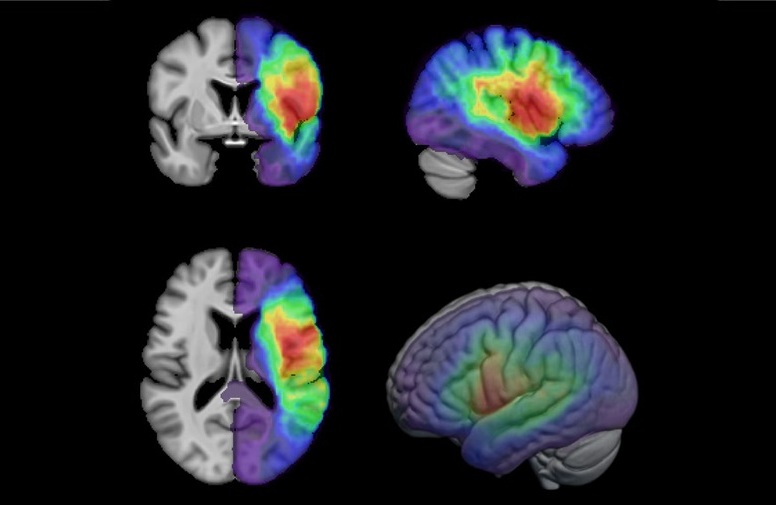
First-Of-Its-Kind AI-Driven Brain Imaging Platform to Better Guide Stroke Treatment Options
Each year, approximately 800,000 people in the U.S. experience strokes, with marginalized and minoritized groups being disproportionately affected. Strokes vary in terms of size and location within the... Read moreUltrasound
view channel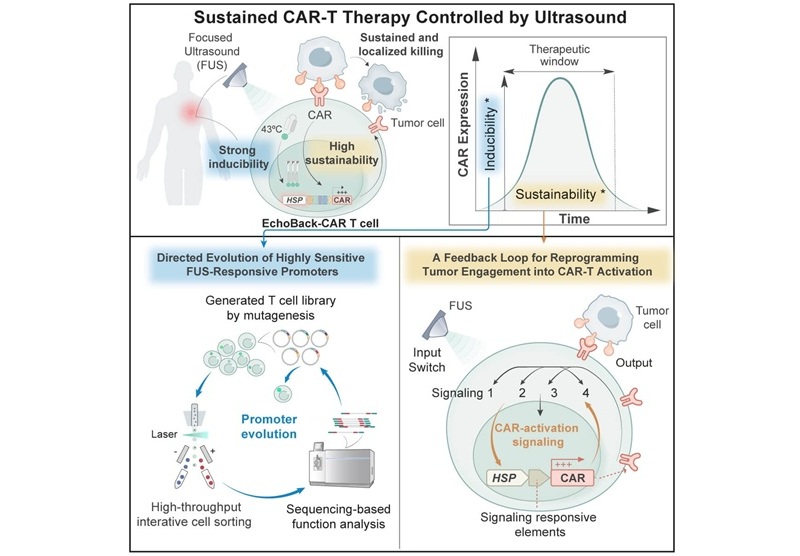
Smart Ultrasound-Activated Immune Cells Destroy Cancer Cells for Extended Periods
Chimeric antigen receptor (CAR) T-cell therapy has emerged as a highly promising cancer treatment, especially for bloodborne cancers like leukemia. This highly personalized therapy involves extracting... Read more
Tiny Magnetic Robot Takes 3D Scans from Deep Within Body
Colorectal cancer ranks as one of the leading causes of cancer-related mortality worldwide. However, when detected early, it is highly treatable. Now, a new minimally invasive technique could significantly... Read more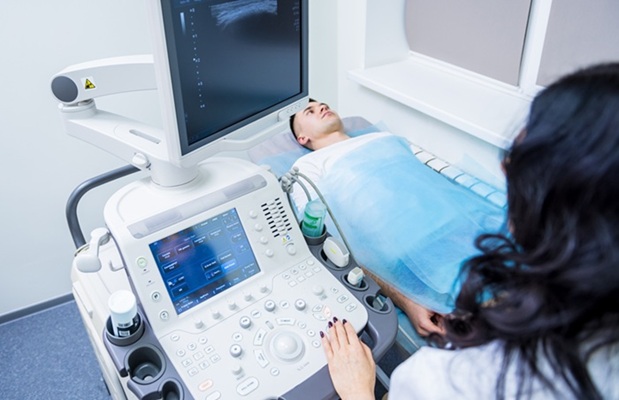
High Resolution Ultrasound Speeds Up Prostate Cancer Diagnosis
Each year, approximately one million prostate cancer biopsies are conducted across Europe, with similar numbers in the USA and around 100,000 in Canada. Most of these biopsies are performed using MRI images... Read more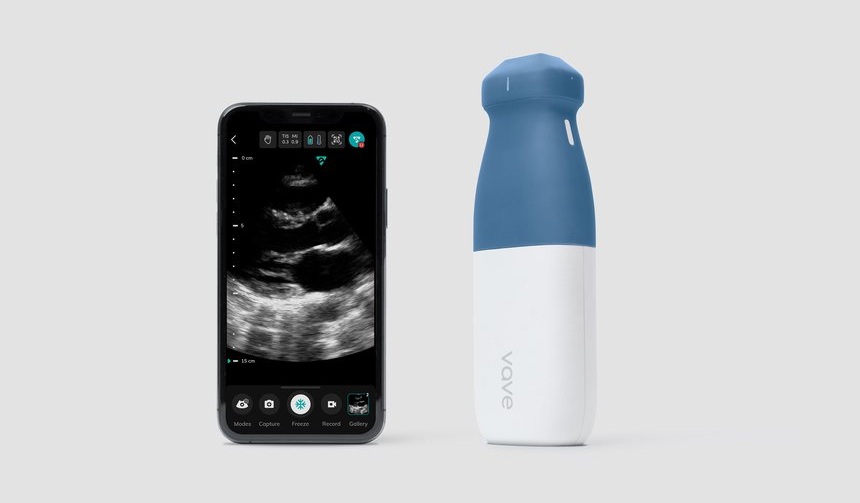
World's First Wireless, Handheld, Whole-Body Ultrasound with Single PZT Transducer Makes Imaging More Accessible
Ultrasound devices play a vital role in the medical field, routinely used to examine the body's internal tissues and structures. While advancements have steadily improved ultrasound image quality and processing... Read moreNuclear Medicine
view channel
Novel PET Imaging Approach Offers Never-Before-Seen View of Neuroinflammation
COX-2, an enzyme that plays a key role in brain inflammation, can be significantly upregulated by inflammatory stimuli and neuroexcitation. Researchers suggest that COX-2 density in the brain could serve... Read more
Novel Radiotracer Identifies Biomarker for Triple-Negative Breast Cancer
Triple-negative breast cancer (TNBC), which represents 15-20% of all breast cancer cases, is one of the most aggressive subtypes, with a five-year survival rate of about 40%. Due to its significant heterogeneity... Read moreGeneral/Advanced Imaging
view channel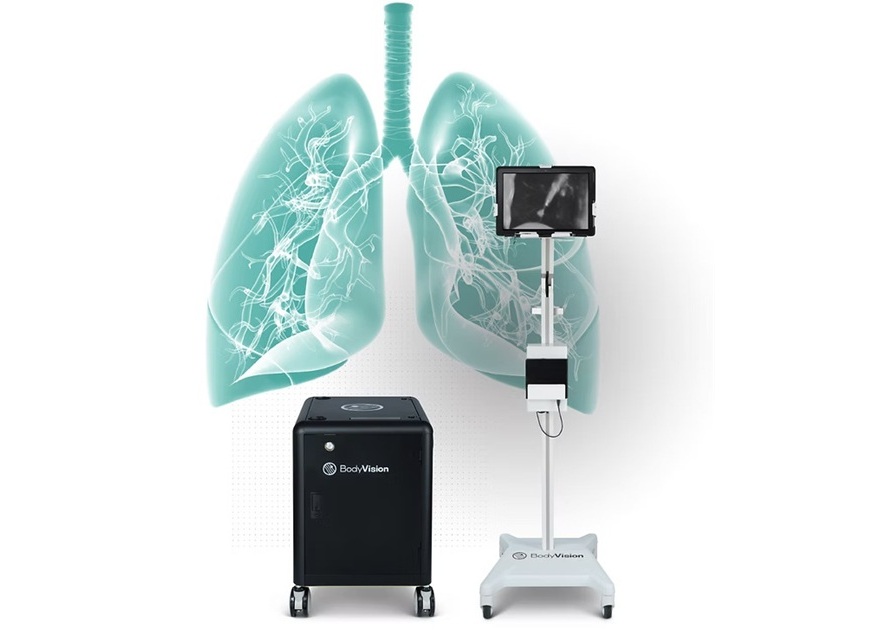
AI-Powered Imaging System Improves Lung Cancer Diagnosis
Given the need to detect lung cancer at earlier stages, there is an increasing need for a definitive diagnostic pathway for patients with suspicious pulmonary nodules. However, obtaining tissue samples... Read more
AI Model Significantly Enhances Low-Dose CT Capabilities
Lung cancer remains one of the most challenging diseases, making early diagnosis vital for effective treatment. Fortunately, advancements in artificial intelligence (AI) are revolutionizing lung cancer... Read moreImaging IT
view channel
New Google Cloud Medical Imaging Suite Makes Imaging Healthcare Data More Accessible
Medical imaging is a critical tool used to diagnose patients, and there are billions of medical images scanned globally each year. Imaging data accounts for about 90% of all healthcare data1 and, until... Read more
Global AI in Medical Diagnostics Market to Be Driven by Demand for Image Recognition in Radiology
The global artificial intelligence (AI) in medical diagnostics market is expanding with early disease detection being one of its key applications and image recognition becoming a compelling consumer proposition... Read moreIndustry News
view channel
GE HealthCare and NVIDIA Collaboration to Reimagine Diagnostic Imaging
GE HealthCare (Chicago, IL, USA) has entered into a collaboration with NVIDIA (Santa Clara, CA, USA), expanding the existing relationship between the two companies to focus on pioneering innovation in... Read more
Patient-Specific 3D-Printed Phantoms Transform CT Imaging
New research has highlighted how anatomically precise, patient-specific 3D-printed phantoms are proving to be scalable, cost-effective, and efficient tools in the development of new CT scan algorithms... Read more
Siemens and Sectra Collaborate on Enhancing Radiology Workflows
Siemens Healthineers (Forchheim, Germany) and Sectra (Linköping, Sweden) have entered into a collaboration aimed at enhancing radiologists' diagnostic capabilities and, in turn, improving patient care... Read more








